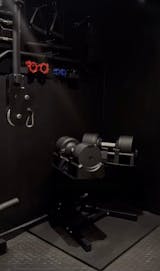What?
In Crossfit and the wider functional fitness space there are a number of acronyms to describe a workout type and today we will explain one of the most common RFT… so WTF is a RFT… it stands for Rounds For Time, it is a easy way to write out a number of exercises that you plan on doing multiple round of, let's use today's workout as an example to show the general layout, the workout is,
5RFT
15 American KB Swings (16kg/24kg)
10 T2B (Toes to Bar)
Let's break it down,
As we have discussed this just denotes that the workout is Rounds For Time style
The number “15” is the number of repetitions (reps) of the movement you will be doing, “American KB Swings” is the movement you will be performing and in the brackets “(16kg/24kg)” is the weight you are recommended usually shown as female weight/male weight but this can be changed to suit your strength, ability and skill
This works in the same way as the one above but in the brackets it is just clarifying that T2B is shorthand for Toes to Bar
Why?
RFT are a great way to mix a few movements together and add intensity. Any movements can be combined with any number of repetitions and any number of rounds, which makes them both easy to think of and very versatile. You can tailor them to work strength by doing less reps and higher weight, or cardio by doing the opposite, you can target certain muscle groups or full body, they can be quick and easy, a long slog or anything in between.
Go on then…
Now it's time to try them out, so you know what they are and why they are so common so now we will give you some tips and pointers to help you get through them alive.
Think about the movements you have to do and how they are going to stress your body. Are you using the same muscles for each movement or different muscles? Let's use today's workout for an example,
5RFT
15 American KB Swings (16kg/24kg)
10 T2B (Toes to Bar)
In this you have 15 American kettlebell swings, these are mainly taxing on your back, glute, hamstrings and grip, then you have T2B which are taxing on your grip, and core mainly. From this you can see that both exercises are taxing your grip so you should expect to have to rest to let your grip recover, other than this your other body parts should get a rest while you are doing the opposite movement therefore it will likely be heavy on your cardiovascular system.
Now you have evaluated the stress on your body parts you can think of the pacing you are going to adopt, which areas are you going to work really hard at and which areas are you going to rest at.
Pacing is one of the most important skills to master if you want to get through these quickly.
We will again refer back to this weeks workout, from breaking down the workout we know it is going to be a very grippy workout so you are going to want to be careful you don't overdo the grip, aim to have short rests more often than you think and take a rest just before you think you need to. If you rest early, it won't take long for your grim to recover and you can get going again but… if you leave it too late you won't be able to hold your mobile phone let alone the kettlebell tha needs swinging 10 more times
Try this one out and let us know your times
5 RFT
15 American KB Swings (16kg/24kg)
10 T2B (Toes to Bar)
Or
5 RFT
15 American KB Swings (8kg/12/kg)
10 K2E (Knees to Elbows)



